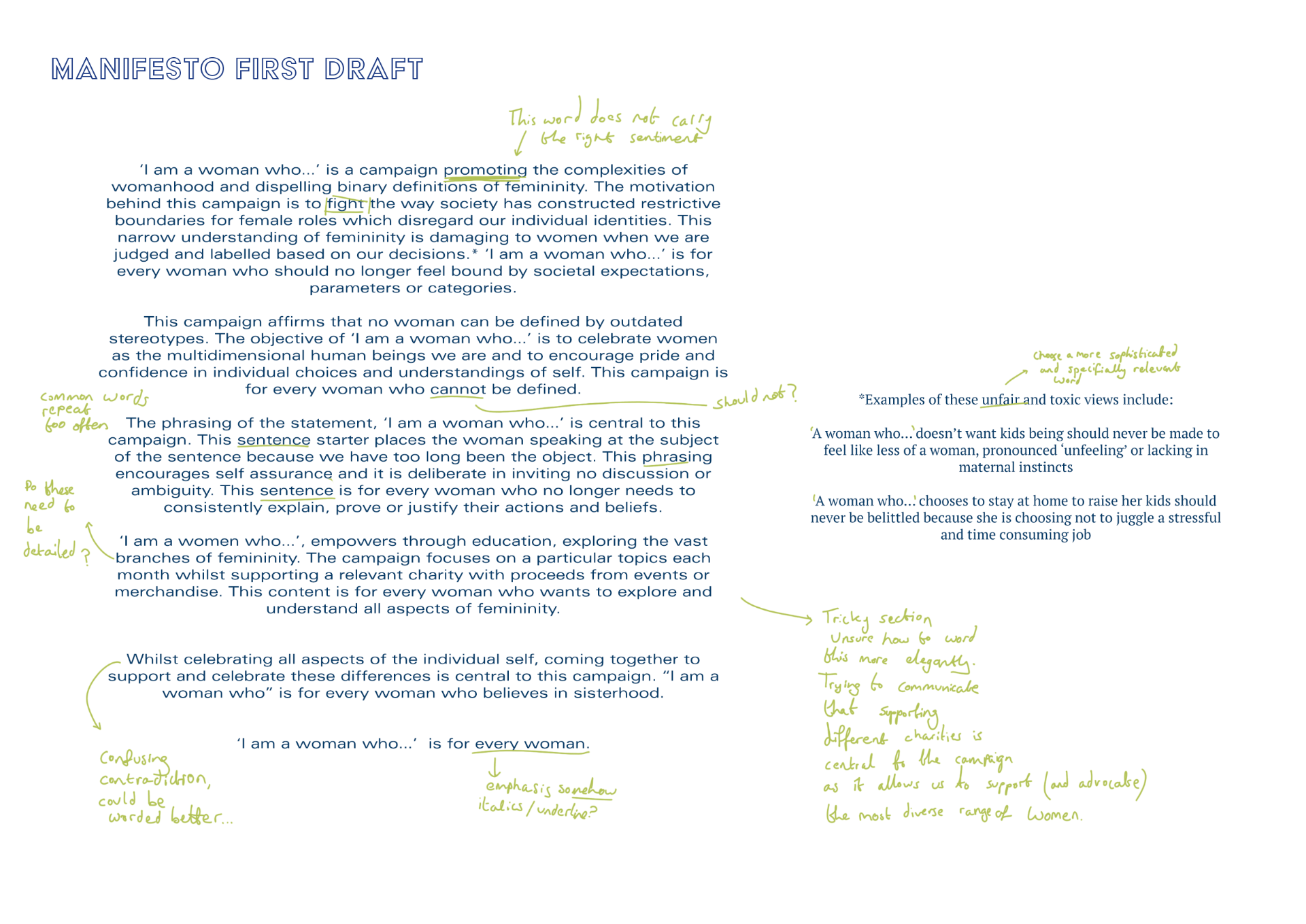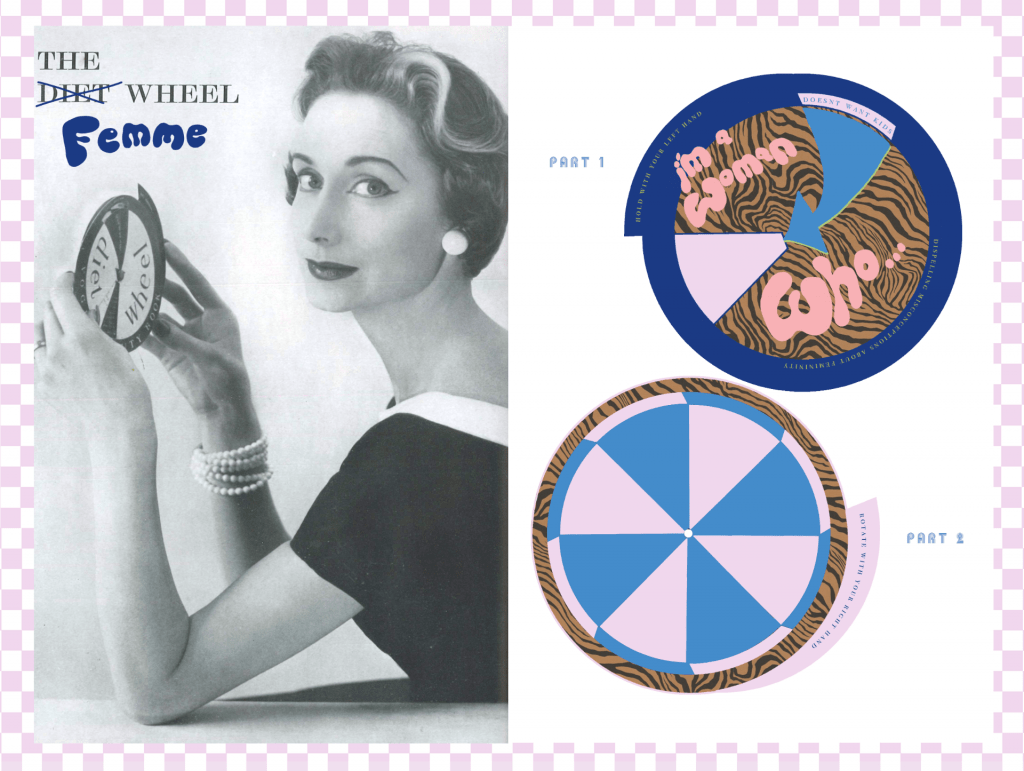I am astounded when I look back over this project. I have never had a project develop as dramatically as this and I am so proud of what it has become. The concepts around gender roles and the female gaze that I bought forward from my AD394 research did have the essence and potential for what this project evolved into, I just had no idea at that point.
I am so pleased that despite my outcome being ultimately different to the experiential box I had planned, I have stayed true to my design values and prioritised creating work that is interactive and experiential. I think this is shown throughout the ways in which the campaign is interacting with its audience and collaborators but more literally through the design of the ‘Fortune Teller’ and ‘Real Wheel’. I am so excited to continue creating designs that can be brought into the physical world and be interacted with, for the ‘I’m a Woman Who…’ platform.
Due to its accessibility and potential to reach much wider audience, the campaign became something more culturally valuable than I could’ve achieved with my original box idea. I believe as an artefact it documents a more poignant moment of time within the evolution of feminism.
Strangely, although at the end of this module, this campaign feels as though it is only in its infancy and I am excited to take it further. I currently have content collaborators producing more work for the campaign and I am going to continue reaching out to more people, as well as posting the imagery I already have. These plans are outlined in my sketchbook. I am particularly grateful to have found and learnt how to use these resources and organisation methods because it will make proceeding with ‘I am a Woman Who…’ campaign a professional and targeted process that will ultimately show through within the content. This level of integrity will be what shows this platform means business.











